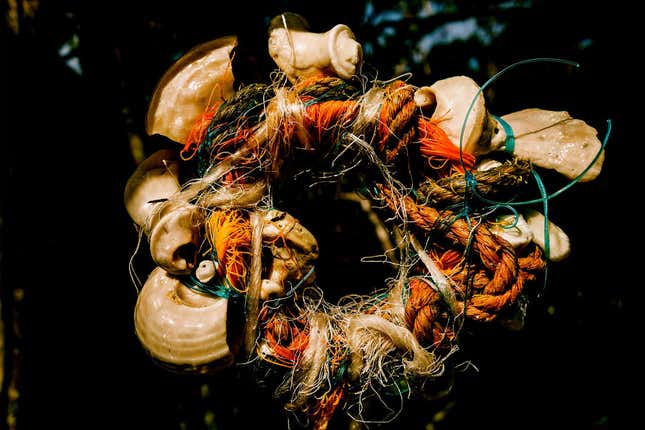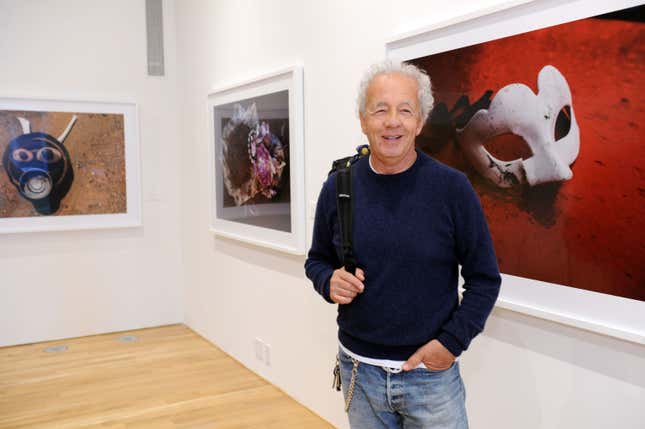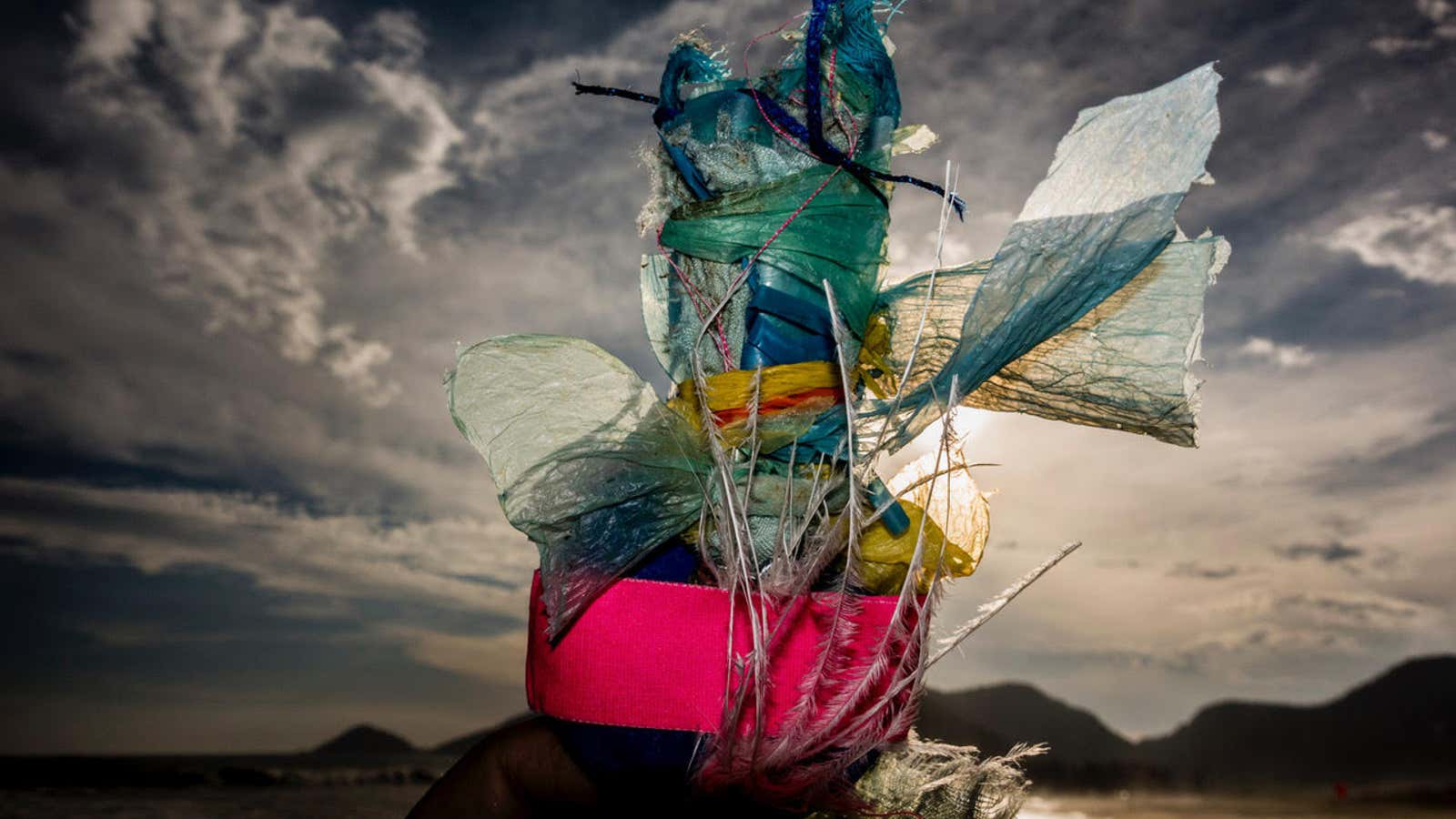Pablo Picasso saved his nail clippings. French chef Eric Ripert wears a cross around his neck everyday. Model Heidi Klum travels with a pouch of baby teeth. For creative superstars who feel pressure to constantly deliver, carrying a special amulet serves as insurance against bad luck that could ruin their game.
A fascinating new exhibition in New York City explores these evocative objects through the lens of iconic fashion photographer Gilles Bensimon. Titled Gris-Gris, the show features photographs of talismanic objects that Bensimon makes to allay his anxieties while on high-profile fashion shoots. Crafted from found objects—string and bottle caps from Phuket, a cracked mask from Venice, a piece of sea glass from Long Island, New York—the 74-year-old celebrity photographer uses them to ward off bad vibes on his set.

For fashion fans, the exhibition at Gobbi Fine Art gallery offers a rare glimpse into the creative process of Bensimon, Elle magazine’s former creative director and the marquee photographer on America’s Next Top Model. But even for those who’ve never heard Tyra Banks enunciate Bensimon’s name on the long-running reality show, Gris-Gris offers an illuminating look at how special objects, superstitions, and rituals figure in the lives of successful professionals.
As irrational as it sounds, even scientists believe in the efficacy of lucky charms. A 2010 University of Cologne study published in Psychological Science suggests that having superstitions may actually result in higher performance because the idea of having a special, invisible power inspires confidence. “It may have been the well-balanced combination of existing talent, hard training, and good-luck underwear that made Michael Jordan perform as well as he did,” the researchers explain.
In the Gris-Gris exhibit catalogue, art historian Diana Widmaier-Picasso describes the weird habits of her famously superstitious grandfather:
To avoid any risk, Picasso continually put off trips to the hairdresser and made sure his hair was disposed of properly, regularly sending both it and his nail parings to my grandmother, Marie-Térèse. Picasso was also particularly interested in palindromes: words or numbers that were the same forwards and backwards. His fetishist propensities were still more revealing. When his children, Claude and Paloma, came for the holidays, Picasso systematically kept one or two items of his son’s clothing, a “metaphorical way of appropriating someone else’s substance.”
Elsewhere in the catalogue, Bensimon’s circle of famous designers, writers, athletes and models reveal their power amulets. Surfing legend Laird Hamilton relies on Hawaiian ti leaves for protection when he’s out in the water; Diane von Furstenberg decorates rooms with Turkish evil eyes’ and Kim Kardashian West has a toy treasure box from her daughter, North, to keep her safe.

Some lucky charms are intangible. Calvin Klein is obsessed with the number 13, as Bensimon’s ex-wife Elle Macpherson identifies with the number 11. French designer Alexandre de Betak is consoled by the Japanese electronic music classic, “Snowflakes Are Dancing.” and photographer Nicolas Rachline thinks of a miniature Torah whenever he feels nervous about flying. “As I visualize the object sitting in my bedroom on my grandfather’s framed portrait, I place myself under the protection of an idea, a symbol, another form of totem,” he explains. “[It’s] not much different, however abstract it may be, from more usual kinds of ‘lucky charms’, rabbit feet, horseshoes and other four-leaf clovers meant to protect us.”
Bensimon, who belongs to a family of artists and art dealers, learned about the power of objects at an early age. Born with advanced dyslexia, he’s been creating art assemblages to express himself all his life. The centerpiece of his New York City apartment today is a towering bookshelf teeming with bric-a-brac and handmade gris-gris accumulated from his world travels. But unlike those who cling to one lucky charm, Bensimon isn’t sentimental about any particular gris-gris. At times, he even gives them away to strangers or lets them dissolve in wind after a photo shoot finishes. He says transience lend gris-gris extra resonance.
